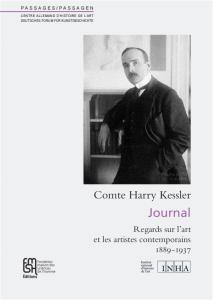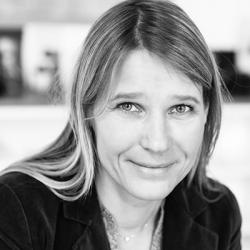A Publishing Project: The Diaries of Count Harry Kessler (1868-1937)
A Publishing Project: The Diaries of Count Harry Kessler (1868-1937)
Harry Graf Kessler (1868–1937) was one of the key figures of cultural life in Europe around 1900. As a collector, attentive observer, and participant in the literary and artistic events of his time, he was constantly moving between Berlin, Paris, London, and Weimar. He had a lasting effect on the formation of the artistic avant-garde in Germany and France and counted artists such as Paul Signac, Auguste Rodin and Georges Maillol among his friends. An engaged proponent and ally of the Vienna Secession, he advocated for a modernization of the art system in Wilhelmine Germany and, from 1903 to 1906, served as director of the Grand-Ducal Museum in Weimar. Along with Max Liebermann, Henry Van de Velde, and Lovis Corinth, he was one of the founding members of the Deutschen Künstlerbundes (Association of German Artists), and became the organization’s vice president at its constitutive meeting in 1903. His collection of German and French art is one of the most important of its kind of the Wilhelmine era and includes, among other works, Les Poseuses by Seurat, the Portrait of Dr. Gachet by Van Gogh, and Maillol’s sculpture Méditerranée.
During World War I, while in Switzerland, Kessler tried to influence German cultural propaganda and pursued his unifying and peacemaking approach to art even during wartimes. After the proclamation of the Weimar Republic, he was also one of the first defenders of Dada Berlin in opposition to the conservative camp.
His diary, which reveals him to be both a critical and relentless art mediator between France and Germany and an indispensable source of information on European cultural history around the turn of the century, has been published by the Germany Literary Archive in Marbach in nine volumes.
On this basis, the German Center for Art History and the Institut national d’histoire de l’art in Paris have made it their goal to make segments of this standard work available to the French public. In lengthy passages, Kessler’s visits to artists’ studios, discussions with contemporary artists, museum personalities, and other cultural actors are documented and offer a glimpse into cultural and art policy relations in the Wilhelmine Era until 1937. Emphasis is placed on entries explicitly pertinent to artistic life in France, which will all be accompanied by commentary.
Publishing Committee:
- Ursel Berger (Georg Kolbe Museum Berlin)
- Julia Drost (German Center for Art History)
- Alexandre Kostka (Université de Strasbourg)
- Antoinette Le Normand-Romain (INHA, Paris)
- Dominique Lobstein (Courbevoie)
- Philippe Thiébaut (INHA, Paris)
Text Selection:
- Ursel Berger
- Alexandre Kostka
Translation:
- Jean Torrent
Person in charge





